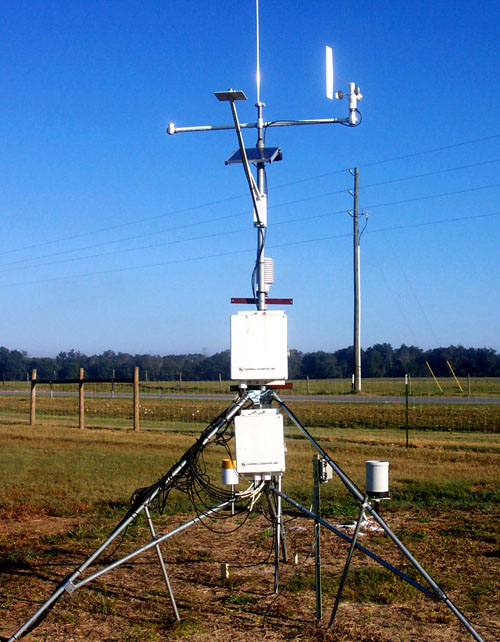Farmers rely on the most up-to-date local weather information to make the best decisions on when to plant or make other decisions for their crops. Without that knowledge, they can lose money, says a University of Georgia economist.
There are 79 Georgia Automated Environmental Monitoring Network weather stations located across the state, from Dalton to Valdosta and Augusta to LaGrange.
What if just one were closed?
Two and a half years ago, economists with the UGA College of Agricultural and Environmental set out to find how closing just one of these stations would affect the state’s farmers.
For the study, the researchers used the weather station located on the Stripling Irrigation Research Park in Camilla in southwest Georgia, the state’s row-crop farming belt.
“We needed to use a station in an area where agriculture relies on irrigation and one that’s been online for several years so we could look back at historical data,” said CAES economist Jeff Mullen, who led the project. “Camilla was perfect because there are several neighboring weather stations that are relied on heavily by farmers.”
Farmers' profits lowered
According to the study, closing the Camilla station could result in a loss of $290,000 to the cotton farmers in the area who rely on the station’s data for making planting and input decisions, such as when to fertilize or make pesticide or herbicide applications. The study focused only on planting dates and irrigation applications.
Peanut farmers who rely on the station could lose $276,000, corn farmers could lose $215,000 and soybean farmers could lose $64,000. These figures are collective loses over the entire growing season.
Weather data from your neighborhood
“When it rains, you might get a television report that it rained in Tifton. But that doesn’t mean it rained in Americus, and the quantities of rain will be different,” he said. “The weather stations provide those more-refined details that farmers rely on.”
To get the dollar values, the researchers first modeled how farmers use the information from the Camilla station.
“Basically, we modeled what farmers would do with the best information available from Camilla,” Mullen said. “Then we modeled what farmers would do if the Camilla station wasn’t there and they had to rely on the next best alternative, one of several neighboring stations like the one in Arlington or in Tifton.”
Second best is just that
The UGA scientists were then able to uncover how using the “second best information” would affect the farmers’ profits, he said.
“Individual weather stations generate information that coalesces into a network of information,” Mullen said. “In this way, they are able to provide more accurate information on a finer scale. This study shows how letting just one station go dark could affect farmers in that area.”
Mullen is now studying how closing stations will affect fruit growers, like blueberry or peach farmers, who rely on frost forecasts generated by data from the Georgia Automated Environmental Monitoring Network. To view data from the network, visit the Web site www.Georgiaweather.net.








